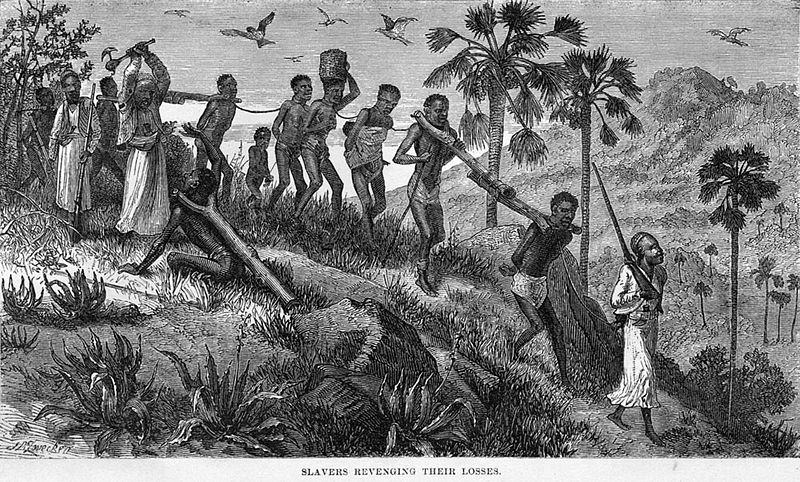Fitxer:Slaves ruvuma.jpg

Mida d'aquesta previsualització: 800 × 482 píxels. Altres resolucions: 320 × 193 píxels | 640 × 385 píxels | 1.000 × 602 píxels.
Fitxer original (1.000 × 602 píxels, mida del fitxer: 286 Ko, tipus MIME: image/jpeg)
Historial del fitxer
Cliqueu una data/hora per veure el fitxer tal com era aleshores.
| Data/hora | Miniatura | Dimensions | Usuari/a | Comentari | |
|---|---|---|---|---|---|
| actual | 04:36, 6 abr 2013 |  | 1.000 × 602 (286 Ko) | Underlying lk | larger file |
| 18:36, 14 març 2007 |  | 329 × 178 (23 Ko) | Béka~commonswiki | {{Information |Description=Arab slave traders and their captives along the Ruvuma (Rovuma) river (in today's Tanzania and Mozambique) |Source=http://www.frontline.org.za/news/making_disciples_nations.htm; also in various non-Internet publications |Date=18 |
Ús del fitxer
La pàgina següent utilitza aquest fitxer:
Ús global del fitxer
Utilització d'aquest fitxer en altres wikis:
- Utilització a af.wikipedia.org
- Utilització a ar.wikipedia.org
- Utilització a arz.wikipedia.org
- Utilització a ast.wikipedia.org
- Utilització a azb.wikipedia.org
- Utilització a be.wikipedia.org
- Utilització a bn.wikipedia.org
- Utilització a bs.wikipedia.org
- Utilització a cs.wikipedia.org
- Utilització a de.wikipedia.org
- Utilització a diq.wikipedia.org
- Utilització a el.wikipedia.org
- Utilització a en.wikipedia.org
- Mozambique
- Slavery
- Death march
- Economic history of Africa
- History of slavery
- Slavery in Africa
- Thomas Jefferson and slavery
- 19th century
- Brussels Anti-Slavery Conference 1889–90
- Portal:Pan-Africanism/Selected history
- Portal:Pan-Africanism/Selected history/4
- Indian Ocean slave trade
- User:Caesarz870/sandbox3
- Medieval and early modern Africa
- Utilització a es.wikipedia.org
- Utilització a eu.wikipedia.org
- Utilització a fi.wikipedia.org
- Utilització a frr.wikipedia.org
- Utilització a fr.wikipedia.org
- Utilització a ga.wikipedia.org
- Utilització a gd.wikipedia.org
- Utilització a gl.wikipedia.org
- Utilització a ha.wikipedia.org
- Utilització a hy.wikipedia.org
Vegeu més usos globals d'aquest fitxer.
